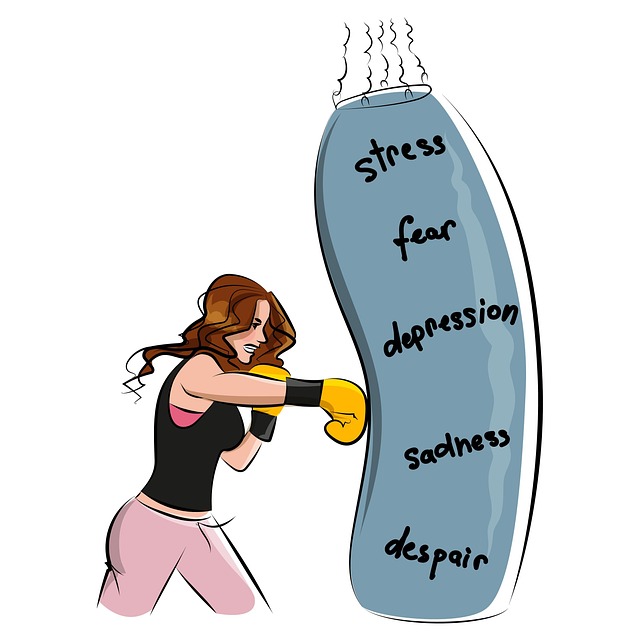Denver Drug Abuse-Substance Abuse Therapy prioritizes risk assessment as a cornerstone for comprehensive client care. Through detailed evaluations of hazards and their impacts, therapists implement evidence-based practices to mitigate risks and enhance therapeutic outcomes. Harm minimization strategies, including trauma support services and peer group therapy, are integrated to address underlying issues. Continuous monitoring, adaptive planning, and self-care promotion ensure high-quality treatment, fostering client resilience and recovery in a supportive environment.
In the realm of Denver drug abuse-substance abuse therapy, risk assessment and harm minimization planning are paramount for ensuring client safety and well-being. This comprehensive guide delves into the foundational principles of understanding risk assessment, its critical role in identifying and evaluating risks specific to substance abuse settings.
It explores best practices for developing and implementing tailored harm minimization plans, along with strategies to monitor, review, and adapt for continuous improvement.
- Understanding Risk Assessment: A Foundation for Harm Minimization
- Identifying and Evaluating Risks in Substance Abuse Therapy Settings
- Developing a Comprehensive Harm Minimization Plan
- Implementing Strategies to Reduce Risks and Support Client Well-being
- Monitoring, Reviewing, and Adapting: Ensuring Continuous Improvement
Understanding Risk Assessment: A Foundation for Harm Minimization

Understanding Risk assessment is a cornerstone in the realm of harm minimization planning, especially within the context of Denver Drug Abuse-Substance Abuse Therapy. It involves meticulously evaluating potential hazards and their consequences to guide strategies aimed at preventing or mitigating negative outcomes. Mental health professionals utilize this process to navigate complex situations, ensuring client safety while fostering effective therapy.
A comprehensive risk assessment for mental health professionals entails considering various factors like a client’s history, current circumstances, and inherent risks associated with specific behaviors or conditions. This proactive approach not only strengthens the therapeutic alliance but also empowers professionals to implement evidence-based practices for stress management and self-esteem improvement, ultimately enhancing overall treatment efficacy.
Identifying and Evaluating Risks in Substance Abuse Therapy Settings

Identifying and evaluating risks is a cornerstone of effective harm minimization planning in substance abuse therapy settings, such as those found in Denver drug abuse centers. Therapists must meticulously assess various factors to ensure patient safety and promote positive outcomes. This process involves scrutinizing individual client histories, understanding their unique triggers and vulnerabilities, and recognizing potential hazards within the therapeutic environment. By employing comprehensive risk assessment tools, therapists can identify risks related to relapse, self-harm, or interpersonally violent behaviors.
In Denver’s substance abuse therapy settings, evaluating risks extends beyond initial assessments. It involves ongoing monitoring and adaptive strategies that cater to each client’s evolving needs. For instance, implementing evidence-based practices like Mood Management techniques can help mitigate anxiety and depression, reducing the risk of adverse emotional outcomes. Empathy Building Strategies foster a supportive environment, enhancing client engagement and adherence to treatment plans. Additionally, Confidence Boosting interventions empower clients to navigate challenges, lower self-doubt, and make healthier choices, all vital components in harm minimization planning.
Developing a Comprehensive Harm Minimization Plan

In developing a comprehensive harm minimization plan for Denver Drug Abuse-Substance Abuse Therapy, it’s crucial to integrate Trauma Support Services and Empathy Building Strategies. This involves recognizing that many individuals struggling with substance abuse have experienced underlying trauma. By offering tailored support and creating safe spaces, therapists can foster trust and encourage open communication. Effective strategies might include group therapy sessions, where clients share their experiences and develop coping mechanisms collectively, thereby enhancing peer-to-peer support and emotional resilience.
The plan should also incorporate Mental Wellness Podcast Series Production as a tool for reaching a broader audience. These podcasts can provide valuable insights into recovery journeys, feature expert interviews, and discuss relevant topics such as stress management, mindfulness techniques, and healthy coping strategies. This multimedia approach not only amplifies awareness but also offers practical tips for maintaining mental wellness, ultimately contributing to the overall harm minimization goal.
Implementing Strategies to Reduce Risks and Support Client Well-being

Implementing effective strategies to reduce risks and support client well-being is a cornerstone in Denver drug abuse-substance abuse therapy. It involves a multi-faceted approach, focusing on both individual clients and organizational practices. One key component is fostering self-care routine development for better mental health, encouraging clients to prioritize their overall well-being as an integral part of recovery. By integrating communication strategies, therapists can create safe spaces where clients feel heard, understood, and empowered to express their needs and concerns openly.
Additionally, burnout prevention strategies for healthcare providers are essential in ensuring the longevity and quality of care. This includes promoting balanced workloads, providing adequate support systems, and encouraging healthy work-life boundaries. Such measures not only protect the mental health of therapists but also enhance their ability to offer compassionate and effective Denver drug abuse-substance abuse therapy, ultimately contributing to better client outcomes.
Monitoring, Reviewing, and Adapting: Ensuring Continuous Improvement

Effective risk assessment and harm minimization planning aren’t static processes; they require continuous monitoring, reviewing, and adapting to stay relevant and impactful in addressing Denver drug abuse-substance abuse therapy challenges. Regular monitoring involves closely watching for any changes in client behaviors, environmental factors, or emerging trends that could impact treatment outcomes. This proactive approach allows mental health professionals to identify potential risks early on, enabling them to make timely interventions.
Reviewing the risk assessment and harm minimization plans is an ongoing task that ensures their accuracy and effectiveness. In light of new research, evolving best practices, and individual client progress, these strategies should be updated regularly. This process fosters a dynamic environment where emotional regulation coping skills development can be integrated into treatment plans, enhancing the overall resilience of clients facing substance abuse challenges. Adapting to these changes demonstrates a commitment to delivering evidence-based practices that are tailored to meet the unique needs of each individual in their journey toward recovery.
Risk assessment and harm minimization planning are essential components of providing effective substance abuse therapy in Denver. By understanding the foundational principles outlined in this article, therapists can create a comprehensive plan tailored to their specific settings. Identifying and evaluating risks, implementing strategies to mitigate them, and continuously monitoring progress are key steps towards enhancing client well-being and ensuring positive outcomes in the treatment of drug abuse in Denver. These practices not only safeguard clients but also foster a supportive environment conducive to recovery and long-term success.














